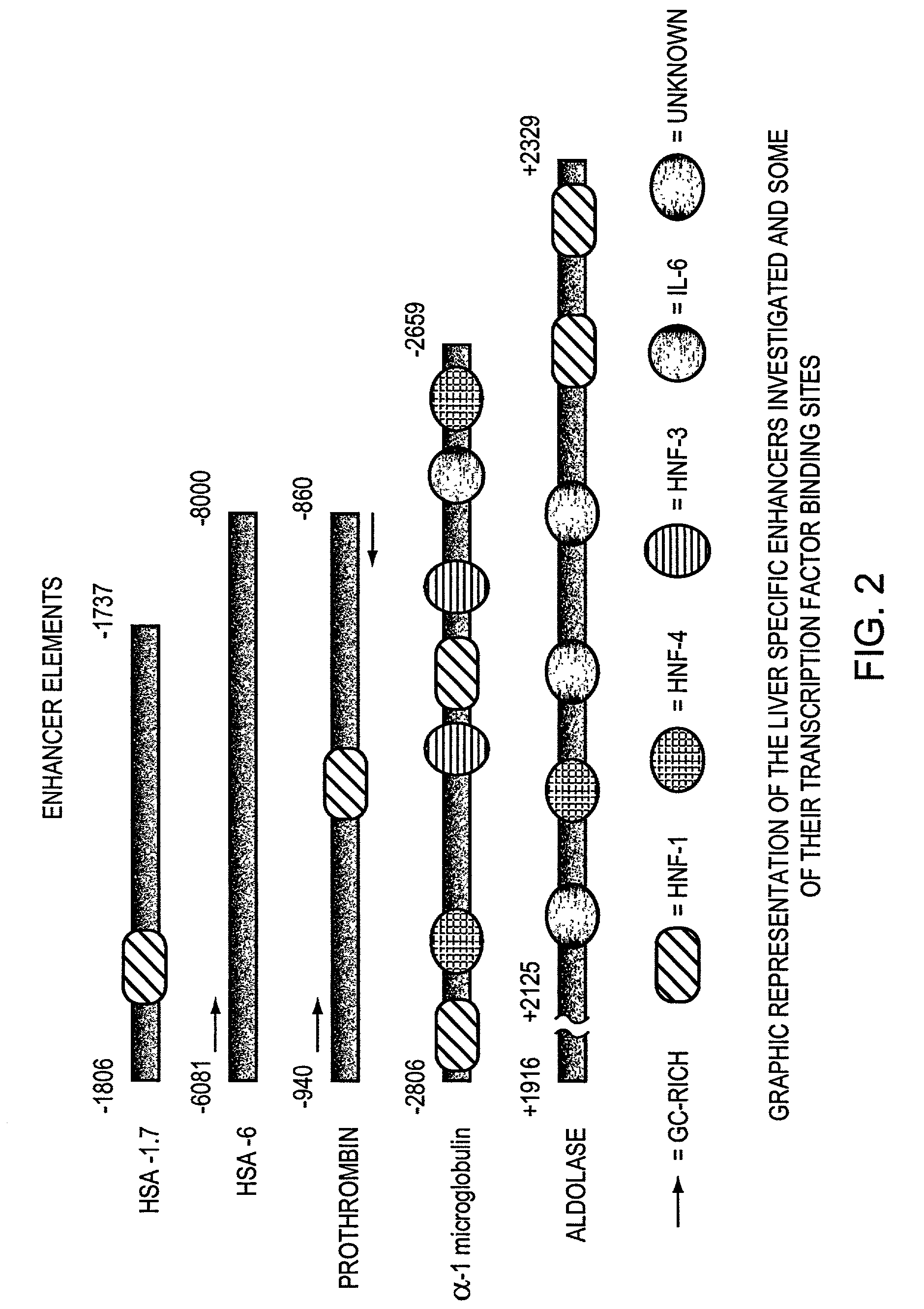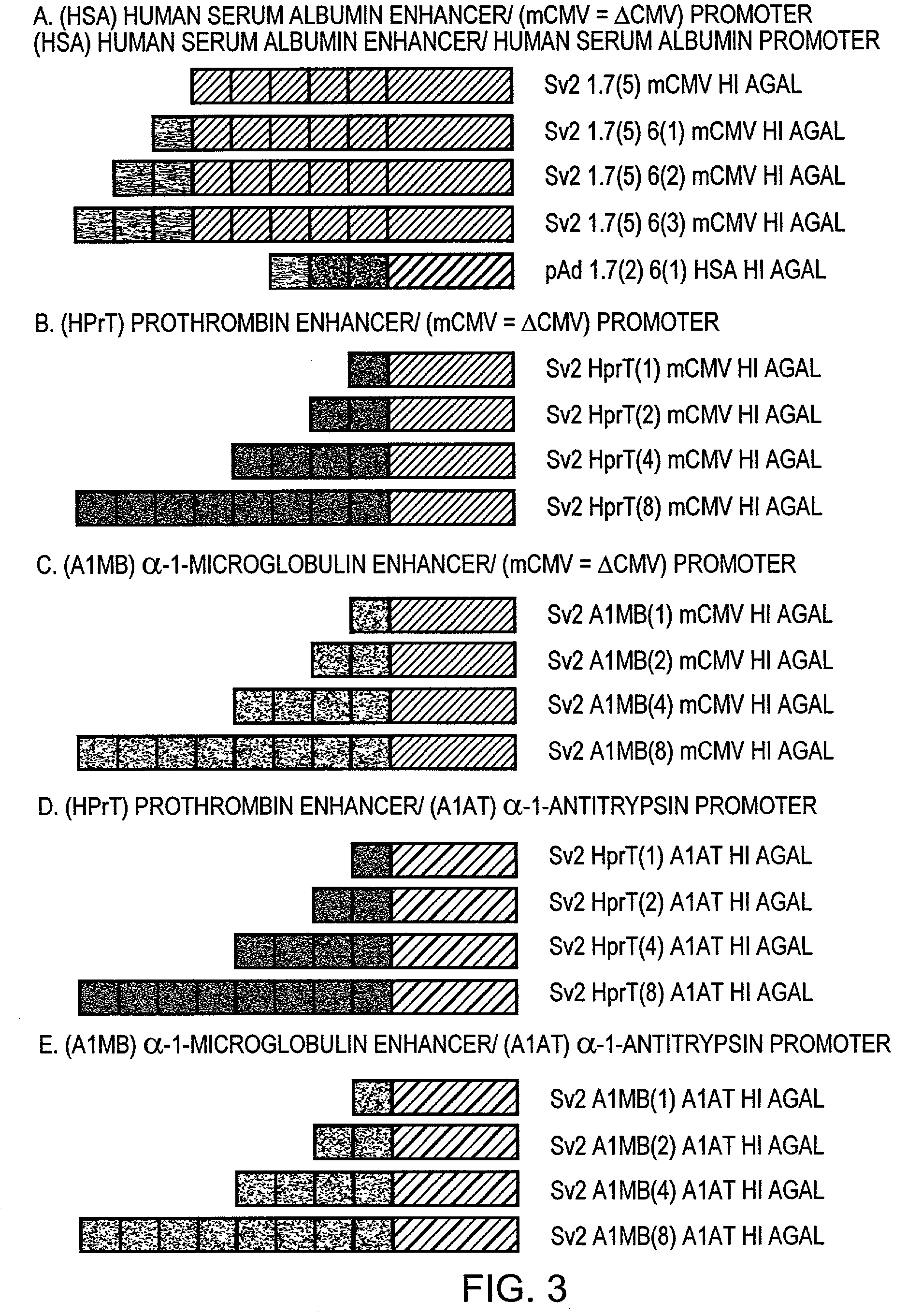Regulatory elements for delivery to the liver
a technology of regulatory elements and liver, applied in the direction of dsdna viruses, biocide, genetic material ingredients, etc., can solve the problems of pulmonary dysfunction, limited usefulness of retroviruses for gene transfer, and limited typical retroviral vectors, and achieve high and sustained expression
- Summary
- Abstract
- Description
- Claims
- Application Information
AI Technical Summary
Benefits of technology
Problems solved by technology
Method used
Image
Examples
examples
1. Plasmid Constructions
[0034]The alpha one antitrypsin promoter (−1200 to +44) was PCR-amplified with Vent DNA polymerase (New England Bio Labs, Beverly, Mass. USA) from an in-house pBr 322 vector that contains a 19-kb genomic Sal I fragment which includes human PI derived from phage clone αNN (Dycaico et al. Science 242:1409-1412. 1988). The promoter was then cloned between the Hind III-EcoR I sites of pBluescript II SK+ (Stratagene, La Jolla, Calif. USA) to generate pBs A1AT. The sequence was analyzed using a PE Biosystems 377 automated sequencer. The hybrid alpha-galactosidase cassette from an in-house vector was cloned into the Spe I site of pBs A1AT to generate pBs A1AT HI AGAL. The alpha one antitrypsin hybrid intron alpha-galactosidase cassette was then subcloned into the pAdQuick (formerly pAdvantage) shuttle vector Sv2 ICEU I to generate Sv2 A1AT HI AGAL.
[0035]Human liver specific enhancer elements from albumin 60 bp and 81 bp; (1.7 kb and 6 kb from the transcription initi...
PUM
| Property | Measurement | Unit |
|---|---|---|
| diameter | aaaaa | aaaaa |
| volume | aaaaa | aaaaa |
| time | aaaaa | aaaaa |
Abstract
Description
Claims
Application Information
 Login to View More
Login to View More - R&D
- Intellectual Property
- Life Sciences
- Materials
- Tech Scout
- Unparalleled Data Quality
- Higher Quality Content
- 60% Fewer Hallucinations
Browse by: Latest US Patents, China's latest patents, Technical Efficacy Thesaurus, Application Domain, Technology Topic, Popular Technical Reports.
© 2025 PatSnap. All rights reserved.Legal|Privacy policy|Modern Slavery Act Transparency Statement|Sitemap|About US| Contact US: help@patsnap.com



